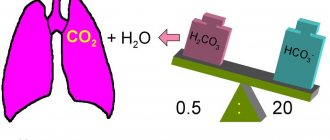Alcohol is not at all the last place among food products. Basically, all significant events, both joyful and sad, do not pass without the use of alcohol. Some people even take alcohol to increase their appetite.
However, we must not forget that the main component of alcoholic beverages is ethanol, which has a harmful effect on human health. It is useful for people to know which type of alcohol is less harmful.
Millions suffer from alcoholism. This is much more than people suffering from other diseases. Alcoholism destroys not only families, but also a person’s personality. Alcohol addiction is one of the most complex disorders, which, moreover, can be quite dangerous. Therefore, it is important that we work to prevent and treat alcohol use disorders.
Withdrawal from binge drinking, coding and treatment of alcoholism. Departure of a narcologist to any city in Russia. Anonymous drug treatment assistance. Call now!
Classification of the dangers of alcohol
Food products containing 1.5% ethyl alcohol are classified as alcoholic.
Depending on the ethanol content, alcoholic drinks are:
- Low alcohol (wine, beer, champagne)
- Strong (vodka, cognac, whiskey, brandy, rum and others)
Alcohol products are made from various types of raw materials:
- Fruit and berry (liqueur, liqueur)
- Herbal (balsam, absinthe, tequila)
- Grape-based (various wines, cognac)
It is generally accepted that fortified alcoholic drinks are more harmful. However, it is worth understanding that low-alcohol alcoholic beverages can cause serious damage to health.
A little history
Almost half of the planet is diligently fighting for the right to be called the birthplace of wine. Archaeologists, providing more and more information, only confuse the situation even more. After all, archaeological excavations only confirm the fact that the “wine drink of the gods” at one time existed in almost every civilization, being an important component of religious and secular life.
Wine appeared almost simultaneously with the source of its production – grapes – becoming available to man. One of the most common legends is that it was found by the Greek shepherd Estafilos while wandering in search of one of his lost sheep. Whether this is true or not, one can only guess, especially since similar legends are inherent in almost every nationality.
More significant evidence indicates that wine production was already well developed in Ancient Egypt. Vessels sealed with resin stoppers were placed in the tombs of the pharaohs so that the afterlife was in no way inferior to earthly life. Research proves that the Sumerians, the ancient Greeks, the Romans, the peoples of Mesopotamia, Persia, Transcaucasia and Asia possessed technologies for the production, filtration and storage of wine. Initially made exclusively for religious purposes, it gradually became an important part of the entire life of society.
The first flowering of winemaking occurred in the era of Ancient Rome and Ancient Greece. True, in the era of antiquity, wine was rarely consumed in its pure form. More often it was diluted with sea water, various herbs and aromatic additives, or evaporated to the texture of syrup. The fall of the Roman Empire was also disastrous for the production of the “drink of the gods.” In the dark times of the Middle Ages, it was made only in the south of Europe (where grapes grew). Caused by the high cost of exports, the high cost of the drink made it the prerogative of only the nobility. Only ministers of the Catholic Church were engaged in regular deliveries of it, because... it was an obligatory part of the masses.
The second round of wine’s popularity occurred in the 18th century. Numerous scientific discoveries of the Enlightenment era gave impetus to the emergence of new production technologies. Enriched with new technologies, recipes that had sunk into history were restored. More and more varieties of the drink appeared, its availability increased, smoothly transferring it from the gilded tables of high society to the wooden benches of the common people.
With the development of technological progress, wine production also increased. By the twentieth century, its production is directly linked to science, which guides winemakers around the world throughout the entire production process - from grape harvesting to filtration and storage conditions.
Today, not a single celebration is complete without wine. Red or white, dry or fortified – the wealth of choice allows everyone to have their own favorite.
Characteristics of less harmful alcohol
The opinions of nutritionists regarding alcohol-containing products vary. Some are of the opinion that alcohol is beneficial, but others insist on its negative effects on the body.
Factors determining the least harmfulness of alcohol:
- Quality
- Ethanol content
- Flavoring additives
- Performance
Doctors are of the opinion that when consumed in small quantities, vodka is more harmless to the body.
What is the reason for this conclusion:
- Simplicity of alcohol products - water with alcohol
- No harmful carbonyl group
- Not high in calories
High-quality vodka, when consumed in small quantities, does not cause withdrawal symptoms. To avoid symptoms of poisoning, it is best to eat vodka with fatty foods. Therefore, the answer to the question of which strong alcohol is less harmful to the body is, of course, vodka.
What else should heart patients include in their diet?
Nutritionists say that a properly selected diet can reduce the risk of heart attacks by 80%. To do this, the menu includes a number of products that have the ability to improve the elasticity of blood vessels, strengthen the heart muscle and have other positive effects on the human body.
Fruits
Fruits are included in the diet to strengthen the heart muscle. The vitamins, minerals and fiber they contain help a person avoid serious vascular problems. Of particular value are 4 types of fruits:
- Pomegranate - stimulates the blood circulation process, ensures elasticity of the walls of blood vessels.
- Bananas are included in the menu for anemia.
- Lemon - eaten for arrhythmia, heart failure, tachycardia and coronary artery disease.
- Persimmon - the magnesium contained in this fruit helps to dilate the walls of blood vessels. Persimmon relieves tension in the heart muscle.
The vitamins B, A and C contained in fruits are of particular importance for the cardiovascular system.
Vegetables
Scientists have proven that beta-carotene contained in vegetables prolongs human life. Their daily consumption reduces the risk of heart attack. Some of the most heart-healthy vegetables include:
- Onion. It influences the proper contraction of the heart muscle, dilates blood vessels, clears them of cholesterol, and lowers blood pressure.
- Peppers. The diet includes sweet and bitter varieties. The antioxidants they contain stimulate the functioning of all internal organs. Peppers cleanse the body of cholesterol.
- Tomatoes. It is recommended to be included in the menu for angina pectoris, hypertension, atherosclerosis, varicose veins and coronary heart disease.
- Pumpkin. Normalizes blood circulation, cleanses the body of cholesterol and equalizes the water-salt balance.
- Garlic. Contains more than 70 substances necessary for the heart. They stimulate blood flow and lower blood pressure, relax the walls of blood vessels and normalize blood circulation. Garlic is recommended for use for arrhythmia.
You can eat vegetables in any form. Vegetable juices are very beneficial for the body.
Berries
Fresh berries are extremely beneficial for the cardiovascular system; they fill the human body with vitamins. They play a huge role in boosting immunity. Especially useful:
- Hawthorn - slows down the process of destruction of the heart muscle, relieves heart attacks, improves the body's oxygen supply.
- Cranberry - the berry has an effect on the entire body. It improves immunity, stimulates blood circulation, cleanses blood vessels and strengthens the heart muscle.
- Viburnum - a berry recommended for arrhythmia, nervous disorders and insomnia.
- Grapes - thanks to this berry, it is possible to solve problems with hypertension and heart failure.
Viburnum and cranberries are perfectly preserved fresh for a long time. Fresh grapes are on sale all year round.
Nuts
The value of nuts lies in the protein and saturated fat they contain. They help cleanse the blood of cholesterol. Walnuts and almonds are especially beneficial for the body. They contain Omega-3 lipids. Peanuts contain folic acid and resveratrol, which are essential for heart health.
Find the 10 healthiest nuts for your heart here.
Dried fruits
Dried fruits retain a large amount of useful substances. To enhance their effect on blood vessels, it is better to use a mix of dried fruits, consisting of dried apricots, raisins and prunes. Figs and dates are important for the heart.
Also, for the treatment of the heart, a healing remedy is prepared from dried fruits, walnuts and natural honey. One of the most effective remedies is Amosov paste.
Dairy
The most valuable dairy product for the heart is cow's milk. It contains the lowest percentage of fat. It is recommended to consume only skim milk. The risk of heart pathologies and the development of atherosclerosis is reduced due to the potassium contained in milk. Milk is recommended for angina and hypertension.
Important! In case of vascular calcification, milk can be included in the diet only with the permission of a doctor.
Dairy products that are important for the cardiovascular system include: koumiss, sheep cheese, kefir, cottage cheese, yogurts and butter.
Fish
The value of fish is in the polyunsaturated fatty acids it contains. Mackerel, sardines and herring contain up to 30% fatty acids. They normalize metabolism and cleanse the blood of triglycerides. Regular consumption of fish in quantities of at least 100 grams per day can reduce the risk of stroke.
Read more about the effect of fish on the cardiovascular system.
bitter chocolate
Eating dark chocolate increases epicatechin levels in the blood plasma. This substance affects blood vessels and lymph nodes. Thanks to dark chocolate, the development of atherosclerosis stops. Black chocolate has been proven to have beneficial effects on the heart.
Turmeric
The spice has antibacterial properties. The plant is used to treat cardiotoxicity and other heart pathologies. Adding turmeric to food reduces the risk of developing atherosclerosis, protects against hypertension and toxic poisoning. Turmeric also improves the elasticity of the walls of blood vessels.
Flaxseed and olive oils
To treat the heart, it is best to use a mixture of oils. It contains substances that prevent the formation of cholesterol plaques and blood clots. Oils normalize blood pressure. It is useful to include them in the diet of people who have had a heart attack, suffer from atherosclerosis, anemia and angina.
Soft drinks
The most important drink for the heart is pure water. Lack of fluid in the human body is the cause of coronary heart disease. You need to drink at least 2-2.5 liters of liquid per day. Heart-healthy drinks include:
- juices (grape, pomegranate, tomato, cranberry);
- green tea;
- soy milk;
- natural coffee.
When including these drinks in the diet, it is necessary to take into account their contraindications and permitted consumption rates. For example, it is not recommended to drink more than 2 cups of coffee per day.
Which alcohol is less harmful to the liver?
Natural grape wines are less harmful to the liver, since the berries do not have a toxic residue. Red grape varieties make healthier wines.
The liver is especially susceptible to the effects of alcohol products. The organ's task is to process 90% of all types of liquids that a person consumes. Liver cells die, are replaced by fat, the ducts become smaller, and the organ becomes significantly smaller.
The condition leads to the formation of a serious disease – cirrhosis. The liver ceases to perform antitoxic functions, which, accordingly, after some time leads to death.
The most dangerous drinks for the liver:
- Beer (has a diuretic effect, increases the toxin content in the blood)
- Sweet alcoholic drinks (contain sucrose, which increases the load on the liver)
- Sparkling drinks (carbon dioxide helps increase the absorption of alcohol in the digestive tract, exceeding the permissible limit)
Alcoholic drinks not on the list are less harmful to the liver.
How to drink
As practice shows, in fact, “prevention” rarely ends with one glass a day. As a rule, people drink much more
than they intended. Thus, residents of the UK manage to drink a whole bottle of wine more than they planned in a week. And over the course of a year, 225 million liters of excess alcohol “flows” across this country. “In addition, you can’t immediately determine whether a person has risk factors for alcohol,” says Brun, “this is only revealed in hindsight, when abuse begins.” The effect of wine antioxidants can only be noticed in the future, but ethanol, contained in all alcoholic drinks, begins to work immediately. After the first glass, the likelihood of developing a stroke increases 2.3 times and decreases by 30 percent only after 24 hours. Attempts to “raise hemoglobin” and “improve appetite” with a glass of wine during pregnancy are especially dangerous. The alcohol contained in any alcoholic drink freely penetrates into the baby’s blood through the placenta. The body of the unborn child is not able to cope with toxic substances that disrupt its development. Alcohol has also been recognized as a drug that causes the most severe consequences from use. On a 100-point scale assessing the harm of psychoactive substances to humans, alcohol is in first place with 72 points, ahead of crack and heroin. “Our everyday culture is to drink alcohol for any reason,” reminds Brun, “this should not happen.”
Which alcohol is less harmful to the stomach?
Alcohol is a chemical substance that is well absorbed by the body, but intensifies the production of reactive oxygen groups. Ethanol promotes oxidation of the gastrointestinal tract and cellular tissue.
Even small doses of alcohol “force” the stomach to produce high levels of acid, which quickly leads to gastritis, which can cause:
- Diarrhea
- Vomit
- Internal bleeding
This condition can lead to cancer:
- Pancreas
- Nasopharynx
- Oral cavity
As a result of alcohol abuse, reflux occurs, in which the acid produced burns the mucous membrane of the larynx. Alcohol abuse often leads to ulcers. This pathology makes it difficult to metabolize and digest food. Ethanol helps reduce digestive enzymes produced by the pancreas to break down carbohydrates and fats.
For stomach diseases during remission, it is permissible to periodically drink dry red wine; in small doses, you can drink high-quality vodka or cognac.
For gastritis the following are strictly contraindicated:
- Sparkling wine
- Cocktails
- Martini
- Pharmacy alcohol tinctures
Security questions
One glass of red wine with a volume of about 150 ml contains a little more than one unit - 12 ml of pure alcohol. A unit
is a unit adopted in Europe equal to 10 milliliters of ethanol.
The dose considered relatively safe for women is two units, for men - three. That is, just a couple of glasses of wine for women is already more than the maximum permissible daily limit of alcohol. “This is a lot,” says Evgeny Brun, director of the Moscow Scientific and Practical Center for Narcology. — If you do the math, it turns out that with a daily glass of wine a person drinks 54 liters per year, which is equivalent to 11 liters of vodka or 4 liters of alcohol per year. Formally, this doesn’t seem like much, but the World Health Organization recommends that you never drink more than 2 liters of alcohol per year.” Gastroenterologists also accept the theory regarding the safe amount of alcohol
, but only in relation to the liver and with reservations. The liver will process a couple of units a day without any problems - however, if it is absolutely healthy. At the same time, for some other organs, for example, the pancreas, there is no safe amount of alcohol, and they suffer from any dose of ethanol.
Which alcohol is less harmful for gout?
Gout is a disease in which there is a disorder in the metabolism of purine substances. If purines begin to come in large quantities from the outside, they are destroyed, resulting in the formation of uric acid. To some extent, uric acid is necessary, but if purine metabolism is disrupted, it critically accumulates in the body. Acid salts accumulate in many tissues, provoking gout attacks. Vodka does not contain purines, so doctors occasionally allow patients with gout to drink it, but not more than 50 g per day. Among other things, vodka, like cognac, provokes dehydration of the body and ensures the synthesis of purines.
For gout patients, white wines are safer.
If you are sick, it is dangerous to use:
- Beer
- Red wine
The most important
The myth about the benefits of moderate doses of alcohol, which appeared thanks to the French lifestyle, was not confirmed by the example of other Europeans who regularly drink red wine.
Beneficial substances – polyphenols – contained in wine can also be obtained from other, harmless sources. For example, grapes, their juice or green tea. Tags:
- Antioxidants
- Alcohol
- Brun
- Safety
- Addiction
1 comment • To leave a comment you must be an authorized user
- DragonCat About “generally accepted” - in some places in Europe (and not only) “generally accepted” is considered to be an extremely positive attitude towards homosexuals. Is this a reason to raise a child this way? Circumcision is considered generally accepted among Jews and Muslims. Is this a reason to take my son to the operating room? Not everything “generally accepted” is the ultimate truth. For example, it’s harmful to live in the city, but for some reason I don’t observe a sharp outflow of city dwellers to nature for clean air - everything is good in moderation. Of course, the uncultured consumption of alcohol substitutes is an evil similar to smoking and must be fought against. But old wine (and not only honey, for example) traditions are not only pleasant, but also useful. If not for health, then for mood, general attitude to life and cultural development in general.
Which alcohol is less harmful to the body of women and men?
A glass of red or dry wine with dinner can be considered less harmless for healthy people.
Freshly brewed beer with a short shelf life is also beneficial. It contains a minimal amount of preservatives and other harmful ingredients, but contains a large amount of hops, a beneficial component. Sparkling wine is harmful for men and women. Its preparation usually uses cheap wort, carbon dioxide and syrup. High-quality fortified alcohol in small quantities is also permissible for consumption. However, in the presence of various types of diseases, alcohol is completely contraindicated.
What about talking?
An entire summit, founded and sponsored by the Desert Heart Foundation, Renaud Society and WineHealth, is dedicated to the issue of the health effects of wine. The organizers strive to prove to doctors, journalists and scientists the positive effect of moderate and regular consumption of wine.
The 2021 summit was held at the University of Davis in California and once again showed that a glass of wine a day increases life expectancy and improves metabolism, acts as a prevention of diabetes, cardiovascular diseases and cognitive dysfunction. But scientists and doctors have repeatedly emphasized that wine should be considered only as part of a lifestyle that includes a Mediterranean diet, exercise, maintaining a healthy weight and quitting smoking. This is the only way a glass of cabernet at dinner can work.










